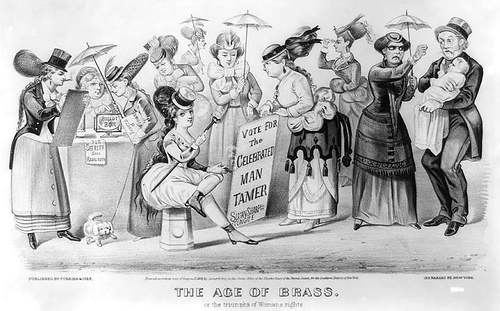
Put a rock in the desert and wait a jillion years, and the blowing sand will make one of these for you. They’re also known as rock pedestals.

Put a rock in the desert and wait a jillion years, and the blowing sand will make one of these for you. They’re also known as rock pedestals.
On April 13, 1844, a curious headline appeared in the New York Sun:
ASTOUNDING NEWS!
BY EXPRESS VIA NORFOLK:
* * * * * * *
THE ATLANTIC CROSSED
IN THREE DAYS!
* * * * * * *
SIGNAL TRIUMPH OF
MR. MONCK MASON’S
FLYING MACHINE!!!
The story told of an amazing 75-hour crossing of the Atlantic by European balloonist Monck Mason, giving extensive details and including a diagram of the craft.
Two days later the Sun printed a retraction, saying that “we are inclined to believe that the intelligence is erroneous” but “we by no means think such a project impossible.”
That compliment would have pleased the hoax writer. His name was Edgar Allan Poe.
You can measure a circle’s circumference by “unrolling” it along a line, like this:

But note that the smaller circle unrolls at the same time … and it gives the same length. Clearly we could do the same thing with circles of any size. Do all circles have the same circumference?
groak
v. to stare at a person longingly while he is eating
“Did you ever hear of a dog before who did not persecute one with beseeching eyes at mealtimes?” wrote Elizabeth Barrett to Robert Browning in 1846 of her celebrated dog Flush. “And remember, this is not the effect of discipline. Also if another than myself happens to take coffee or break bread in the room here, he teazes straightway with eyes & paws, … teazes like a common dog & is put out of the door before he can be quieted by scolding.”
On Aug. 11, 1966, a fishing boat came upon a badly bruised man floating in the water off Brest, France, clutching an inflatable life raft. He identified himself as Josef Papp, a Hungarian-Canadian engineer, and claimed he had just bailed out of a jet-powered submarine that had crossed the Atlantic in 13 hours.
The media laughed at this, but Papp insisted he had built a cone-shaped sub in his garage that could reach 300 mph using the same principle as a supercavitating torpedo. He even wrote a book, The Fastest Submarine, to answer his critics … but somehow this failed to explain how the sub worked, or why plane tickets to France had been found in his pocket, or why a man matching his description had been seen boarding a plane to France hours earlier.
For what it’s worth, Papp did patent a number of other inventions, including a fuel mixture composed from inert noble gases. So maybe he was telling the truth.

“The greatest smoker in Europe died at Rotterdam, and left behind him the most curious of wills. He expresses the wish in his last testament that all the smokers of the country be invited to attend his obsequies, and that they smoke while following in the funeral cortege. He directs that his body be placed in a coffin, which shall be lined with wood taken from old Havana cigar boxes. At the foot of his bier, tobacco, cigars, and matches are to be placed. And the epitaph which he requests shall be placed upon his tombstone is as follows:
Here Lies
TOM KLAES,
The Greatest Smoker in Europe.
He Broke His Pipe
July 4, 1872.
Mourned by his family and
all tobacco merchants.
STRANGER, SMOKE FOR HIM!
— Charles Bombaugh, Facts and Fancies for the Curious From the Harvest-Fields of Literature, 1905

“Sensible and responsible women do not want to vote.” — Grover Cleveland, 1905

Earth seen from 4 billion miles away, photographed by Voyager 1 on June 6, 1990.
Of the “pale blue dot,” astronomer Carl Sagan said, “That’s here. That’s home. That’s us. On it everyone you love, everyone you know, everyone you ever heard of, every human being who ever was, lived out their lives. The aggregate of our joy and suffering, thousands of confident religions, ideologies, and economic doctrines, every hunter and forager, every hero and coward, every creator and destroyer of civilization, every king and peasant, every young couple in love, every mother and father, hopeful child, inventor and explorer, every teacher of morals, every corrupt politician, every ‘superstar,’ every ‘supreme leader,’ every saint and sinner in the history of our species lived there — on a mote of dust suspended in a sunbeam.”
If every rule has an exception, then there must be an exception to the rule that every rule has an exception.

The Playboy Mansion is the only private residence in Los Angeles with a fireworks permit.